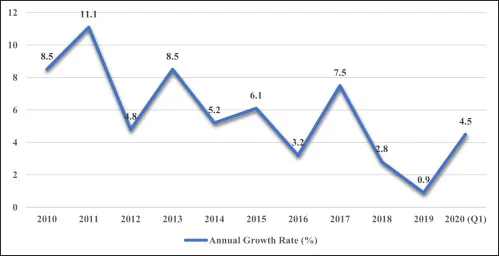🎁 Want a Surprise?
Click here to get redirected to a random post
Introduction
The COVID-19 pandemic fundamentally reshaped many facets of our lives, and real estate finance is no exception. From altered lending practices to evolving investor preferences and shifting market dynamics, the pandemic accelerated changes that were already underway and introduced new complexities to the way real estate is financed.
This article explores the major changes in real estate finance since the pandemic, examines their implications for investors, developers, and buyers, and offers insights into what the future might hold.
The Immediate Impact of the Pandemic on Real Estate Finance
Lending Tightened Significantly
At the onset of the pandemic in early 2020, uncertainty led many lenders to pull back, tightening underwriting standards significantly:
- Stricter credit score requirements
- Larger down payments
- Higher scrutiny on borrower income and employment stability
- Reduced loan-to-value (LTV) ratios
This cautious approach was driven by fears of rising defaults and economic instability.
Surge in Mortgage Forbearance and Loan Modifications
Government stimulus and relief programs led to widespread mortgage forbearance options, allowing homeowners and commercial borrowers to defer payments temporarily without defaulting. This approach helped stabilize markets but delayed recognition of some financial stress.
Interest Rates Hit Historic Lows
In an effort to stimulate the economy, central banks slashed interest rates, making borrowing more affordable and triggering refinancing booms and increased mortgage applications.
Shift in Investor Preferences and Financing Strategies
Increased Demand for Residential Real Estate
With more people working remotely, demand shifted toward suburban and single-family homes, fueling residential mortgage lending growth.
Hesitancy Toward Certain Commercial Sectors
Retail, hospitality, and office sectors faced uncertainty due to lockdowns and remote work trends, leading to tighter lending and cautious investor sentiment for these asset classes.
Growth in Industrial and Logistics Real Estate
The e-commerce boom increased demand for warehouses and distribution centers, attracting new capital and financing options.
Technological Innovations in Real Estate Finance
Digital Mortgage Platforms
Pandemic restrictions accelerated adoption of digital tools for loan applications, document submission, and closings—streamlining processes and improving efficiency.
Automated Underwriting
Artificial intelligence and machine learning models improved risk assessment accuracy, enabling faster loan approvals while maintaining credit quality.
Blockchain and Smart Contracts
While still emerging, blockchain technology is beginning to impact real estate transactions and financing by increasing transparency and reducing friction.
Changes in Regulatory and Policy Landscape
Enhanced Borrower Protections
Regulators implemented stricter rules around foreclosure, appraisal practices, and disclosures to protect vulnerable borrowers during economic uncertainty.
Government-Backed Loan Programs Expansion
Programs like FHA, VA, and USDA loans saw increased usage and expanded criteria to support homebuyers and refinance applicants.
Greater Focus on Environmental, Social, and Governance (ESG) Financing
Lenders and investors are increasingly considering sustainability and social impact in financing decisions, influencing project selection and terms.
Market Trends Influencing Real Estate Finance Post-Pandemic
Rising Property Prices and Affordability Challenges
Low interest rates and supply constraints drove prices upward, making financing more challenging for first-time buyers despite favorable borrowing costs.
Growing Importance of Credit Scores and Financial Health
Lenders doubled down on creditworthiness, emphasizing income verification and debt-to-income ratios amid economic volatility.
Increased Use of Alternative Financing
Private equity, crowdfunding, and non-bank lenders gained prominence as traditional banks exercised caution.
Impact on Commercial Real Estate Financing
Flexible Lease Structures Affecting Cash Flow Projections
The rise of short-term and hybrid leases created new challenges for lenders in assessing income stability.
Tenant Credit Risk Evaluation More Critical
Lenders now place more emphasis on the financial health of tenants as part of underwriting commercial mortgages.
Rise of Mixed-Use Developments
Financing structures adapted to accommodate properties blending residential, commercial, and retail components.
What Investors and Borrowers Should Expect Moving Forward
Continued Low-Interest Rate Environment (With Caution)
Although some rate increases have occurred, borrowing costs remain relatively low by historical standards but may become more volatile.
Emphasis on Resilience and Flexibility
Financing arrangements increasingly factor in risk mitigation for future disruptions, such as pandemic-proof designs and adaptable lease terms.
Importance of Due Diligence
Investors and borrowers must conduct thorough financial, legal, and market due diligence given evolving risks.
Conclusion
The post-pandemic era has brought lasting changes to real estate finance, from lending standards and investor behavior to technological adoption and regulatory frameworks. Understanding these shifts is vital for anyone engaged in real estate—whether buying a home, investing, or developing properties.
Adapting to this new reality will require flexibility, vigilance, and a willingness to embrace innovation. Those who do will be well-positioned to navigate the challenges and seize the opportunities in real estate finance today and tomorrow.
Frequently Asked Questions (FAQs)
Q1: Are mortgage rates expected to rise significantly post-pandemic?
Rates may gradually increase as economies recover, but forecasts vary. Staying informed is crucial.
Q2: How has digital technology improved mortgage processes?
Digital platforms have reduced paperwork, shortened approval times, and enhanced borrower experience.
Q3: Is it harder to get commercial real estate financing now?
Yes, especially for sectors affected by the pandemic. Lenders focus more on tenant quality and cash flow stability.
Q4: What role do non-bank lenders play post-pandemic?
They provide alternative capital sources, often with more flexible terms, but may come at higher costs.
Q5: How can borrowers prepare for stricter lending criteria?
Maintaining strong credit scores, steady income, and low debt levels is essential.


